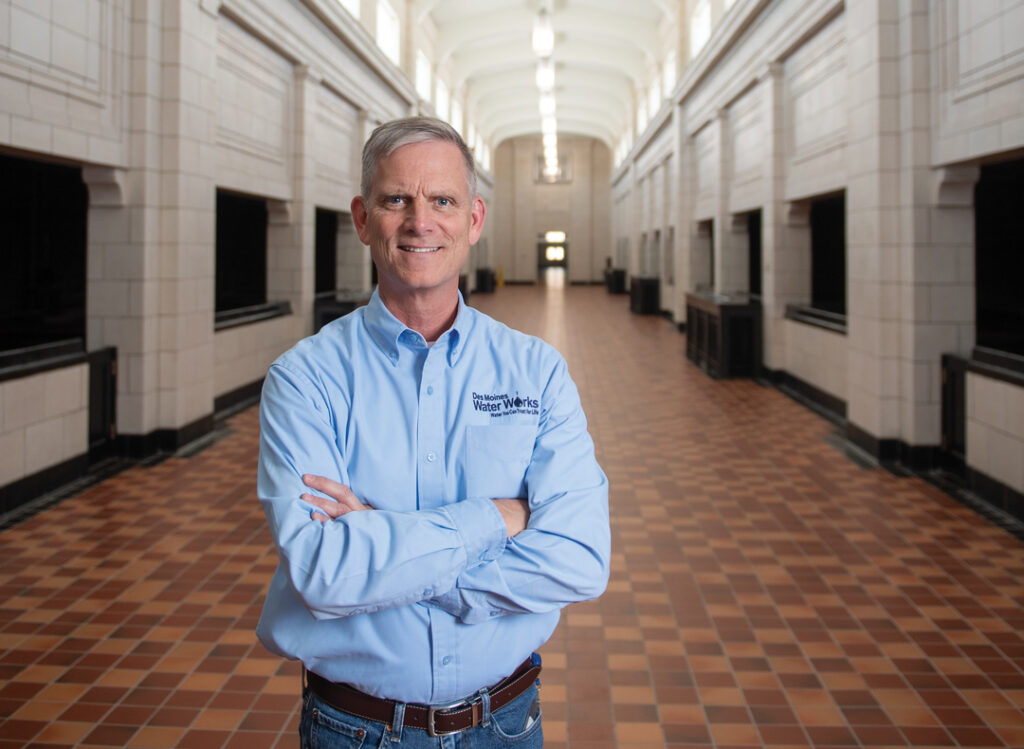The Elbert Files: The MLK bypass story

DAVE ELBERT Jul 25, 2019 | 8:53 pm
3 min read time
615 wordsBusiness Record Insider, Opinion, The Elbert FilesThe next time you’re south of downtown on Martin Luther King Jr. Parkway, imagine what the area would look like if the road had been built as an elevated, six-lane expressway, like Interstate 235, instead of as a graceful boulevard.
For starters, it’s unlikely that the residential and commercial development that’s sprouted like wildflowers in recent years would exist.
More likely: We’d still be calling downtown “Dead Moines.”
It’s hard to overstate the importance of the last-minute decision to ditch a long-planned elevated road and bring traffic down to eye level.
When that change was made in 1996, more than seven decades of planning was behind the idea of a high-volume road on the south edge of downtown that could provide an alternative entry for tradesmen, merchants and workers.
The earliest proposal was in 1925, when renowned urban planner Harlan Bartholomew drew a line on a map, linking a handful of existing streets and adding bridges across the Des Moines and Raccoon rivers to ease traffic flow in and out of the city core.
The idea never caught on despite repeated proposals to enlarge and expand it in 1928, 1940 and 1960.
Instead, Interstate 235 ripped through the city north of downtown during the mid-1960s, creating a not-altogether-pleasant but reasonably efficient system for shuffling workers and merchants in and out of the city core.
But the loop-bypass idea resurfaced in Des Moines’ Vision Plan of 1990-91.
Created under the guidance of Princeton University’s Mario Gandelsonas, the Vision Plan was the catalyst for the John and Mary Pappajohn Sculpture Park, the Principal Riverwalk, today’s East Village and the return of housing in the downtown core.
The plan updated a lot of ideas that had been kicking around for years, including Bartholomew’s 1960 plan for an “industrial highway” around the south edge of downtown.
By the 1990s, highway technology had allowed planners to build elevated highways through cities from New York to Chicago, Omaha and Los Angeles.
Something similar was proposed for Des Moines.
David Feehan, who in 1996 was newly installed as president of Des Moines’ Downtown Partnership, explained what happened next and how things changed.
He remembered meeting with retired contractor Fred Weitz and David Hurd, chief executive of Principal Financial Group. “Both were concerned about the impact of an elevated freeway,” Feehan said, although Weitz recalled it was Feehan who first raised the issue.
In either case, Feehan, who was the downtown expert, knew that elevated freeways in Dallas had cut off development.
Weitz and Hurd “went to the city to try to stop it, but they didn’t get very far,” Michael Gartner wrote three years ago in his Civic Skinny column.
So Weitz came up with another plan. He asked architect Kurt Blunck to build a three-dimensional model of the elevated road.
When business and community leaders saw the model, “the reaction was nearly universal,” Feehan said.
Developer Bill Knapp was particularly incensed. Knapp knew that “an elevated ring road is an idea whose time has gone,” Feehan wrote in a recent article about the project for the “Journal of Urban Regeneration and Renewal.”
Knapp threatened to use his political connections “to try to kill the project if it was not changed,” Feehan added.
Then-Mayor Art Davis and City Manager Eric Anderson “took the position that the project had been designed and they couldn’t walk away from the investment,” Weitz recalled in a recent email.
But they changed their minds after seeing the model, Weitz said.
The window for making a change was small, but the city manager pried it open when he found a small engineering firm in Maryland that quickly redesigned the bypass as the graceful boulevard we know today.










